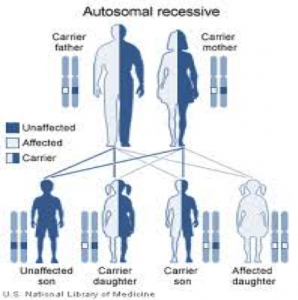Soon after a baby with Netherton Syndrome is born, it becomes clear that the skin is different than the skin of other new born babies. The skin is red, weepy, thin and scaly. There might be problems in absorbing nutrients, what causes failure to thrive: the baby is vomiting and has diarrhea, this may be caused by a food allergy. Because of the loss of water through the skin and the vomiting and diarrhea, the salt balance in the little body is upset. It leads to elevated sodium levels in the bloodstream. There is a great vulnerability for skin infections and other infections. Extra care is necessary for a baby with Netherton Syndrome.
The skin of a child with Netherton Syndrome
In the first years the skin is red, thin scaly and sometimes weepy. Sometimes, it seems that the whole skin peels off and renews in one day. This condition, known as Congenital Ichthyosis Erythroderma, may persist the first couple of years. There are also cases in which the skin improves. Many children with Netherton Syndrome develop circular lesions on the skin, sometimes with sore scaly edges. This is known as Ichthyosis Linearis Circumflexa, characteristic for Netherton Syndrome. The skin is sometime calm, at other times it flames up. There is no explanation, it is suspected to be related to stress and infections.
Atopic eczema (hypersensitivity) like diaper rash or cradle cap are also common, but it will be difficult to distinguish from the scaly red skin (CIE), common for Netherton Syndrom. Eczema often causes severe itching, which can interfere with both the child and the parents sleep. Older children may also develop rashes, as scratching and the broken frail skin lead to easy inflammation. The lymph nodes are often swollen because of the many skin infections.
Because the skin barrier does not function properly, the skin’s natural protection against heat and cold is affected. Warm weather, a stay in a hot car, physical exercises and playing can easily lead to overheating, a serious situation. In the winter, people with Netherton Syndrome often have cold hands and feet. They may even complain about the temperature on a regular summer day…..
Hair
Netherton Syndrome is associated with hair defects, on the head, but also in eyelashes and eyebrows. The hairschaftshows an abnormality under a microscope, it bulges, similar to the swelling of a bamboo node. This node makes the hair fragile and easy to break, mostly close to the scalp. It s therefore called bamboo-hair, or Trichorrhexis Invaginata in medical terms. There is a variety in severity of this condition. By some people, only a few hair fibers are affected, while other patients have no hair at all, or just very short hair, broken close to the scalp.
Accumulated skin scales on the scalp can be combed out.
The immune system
People with Netherton Syndrome often have an increased level of IgE in their blood. IgE shows that the body makes antibodies against foreign substances, substances that trigger allergies. The cause of the increased IgE lies in the maturation of white bloodcels in the thymus. The thymus does not function well in Netherton Syndrome. Allergy prick tests and blood tests can be used tot determine allergies.
Most people with Netherton syndrome have food, pollen or animal dander allergies that show up in the form of eczema or nettle rash, or affect them with a respiratory disease, such as asthma of hay fever. Food allergies may cause diarrhea and vomiting, especially in newborns. In many cases , family members also have an allergy , asthma or eczema.
Neonates may need a special diet, instead of breastfeeding or milk substitutes. Sensitivity to fish, eggs, gluten, nuts and certain vegetables are common. Most often, allergies remain even in adulthood.
Usually children with Netherton Syndrome gain weight and length slowly, they often end below the average in the family. Both short stature and low weight may be a consequence of food allergy or infections.
